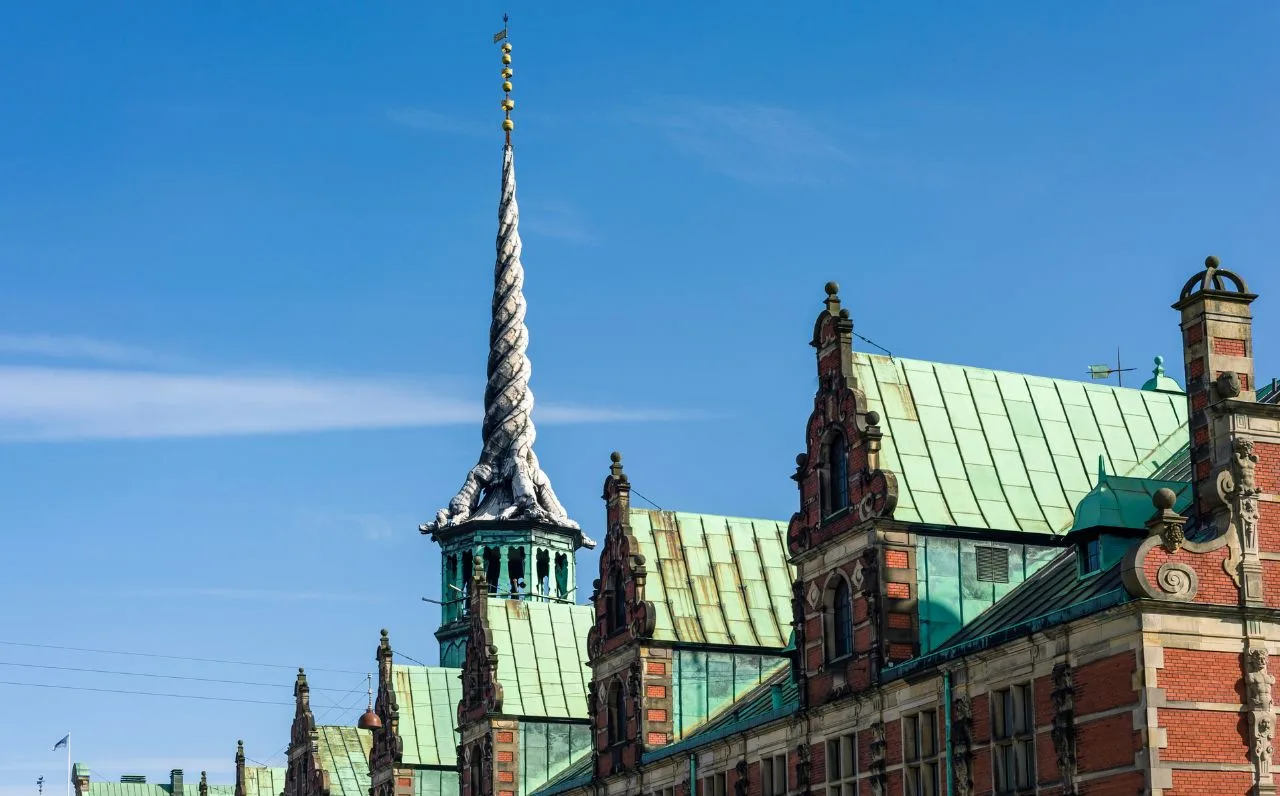Disaster struck the former stock exchange building in Copenhagen, Denmark. The building is one of the oldest structures in the city. The building was undergoing extensive restoration for the occasion of its 400th anniversary when it caught fire. Fires at old monuments during their restoration and renovation are not uncommon occurrences. This begs the question are Indian monuments prepared for disaster management?
Boersen Building

Disaster strikes
The fire began around 7:30 a.m. local time on April 16, underneath the copper roof of the historic red-brick structure, as reported by emergency services.
Over a hundred firefighters were deployed to the scene to combat the blaze, which quickly spread through the building. The scaffolding installed for ongoing renovations hindered firefighting efforts and obstructed access to the flames. Copenhagen Fire Department chief Jakob Vedsted Andersen reported that parts of the roof had already collapsed, complicating the efforts to contain the fire.
The dragon-tailed spire that collapsed in the fire, was one of the Copehagen’s best-known landmarks. It has been seen as symbolically protecting the exchange from enemies as well as from fire, the Chamber said on its website.
The building housed numerous artworks, such as paintings and sculptures. The most renowned piece, an 1895 painting by impressionist Peder Severin Kroyer that portrays business leaders in the stock exchange, was successfully rescued, according to reports.
Culture Minister, Engel-Schmidt said he was moved to see employees, rescue workers and residents working to “rescue art treasures and iconic paintings from the burning building”. Danish military forces were also called to save the invaluable artwork inside the building.
Are Indian monuments disaster-ready?
This is not the first time an iconic heritage building was engulfed in fire in Europe. In 2019, the world witnessed Notre Dame catch fire during restoration work. This begs the question are Indian monuments equipped to handle such disasters?
Many Indian historic sites face significant risks from fire and other natural disasters. While stone structures might appear impervious to such threats, experts warn that the use of wooden scaffolding, ornamental details, and other elements increases the vulnerability of these cultural landmarks. Further, ritualistic practices with exposed such as poojas make these structures more susceptible to disasters.
Experts and heritage advocates in India lament the low priority given to disaster preparedness in Indian heritage sites.
RS Nair, Trustee and Executive Director of Aranmula Heritage Trust in Kerala, highlighted the lack of comprehensive planning to protect these sites from natural disasters, reported the News Minute. Nair cited the example of Sree Padmanabhaswamy Temple in Thiruvananthapuram, where security was only tightened after a vast treasure trove was discovered in 2011. The temple is an 1100-year-old granite structure with exquisite carvings, yet fire and other safety measures received little attention until the treasure’s monetary value was revealed. This pattern underscores the need for a more proactive approach to safeguarding heritage sites.
Bina Thomas, a Kerala-based archaeologist and heritage consultant, stated that the National Disaster Management Authority (NDMA) has issued guidelines for disaster preparedness in cultural heritage sites. However, these guidelines are often not properly followed or implemented. According to her, firefighting systems should be tailored to each site’s unique characteristics, as standard systems may not suit historic structures and could damage their fabric.
Thomas also noted that even basic safety equipment, like fire extinguishers, is often outdated or not maintained. Authorities might claim to have installed sprinklers and other measures, but these are often stop-gap solutions that do little to address the underlying risks.
A senior official from the Archaeological Survey of India (ASI) spoke candidly about the limitations the organisation faces in ensuring disaster preparedness at heritage sites, reported the News Minute. ASI is responsible for maintaining monuments, but issues like fire safety and disaster management fall under state and district administration. This fragmented responsibility structure makes it difficult for ASI to enforce safety regulations effectively.
Furthermore, the official mentioned that ASI manages only 3,691 of India’s numerous monuments, leaving many sites without dedicated oversight. The scarcity of resources and increasing ministry intervention in ASI’s operations further complicate the implementation of effective safety measures.
Given the cultural and historical significance of India’s heritage sites, experts have urged a more concerted effort to protect them from fire, natural disasters, and other risks. The existing guidelines must be properly implemented, and authorities should prioritize safety and preservation alongside human life.
The ASI official emphasised the need for a clearer government strategy regarding the preservation of India’s cultural heritage. As disasters, both natural and man-made, continue to pose threats, the country must take decisive action to ensure that its rich history is preserved for future generations.